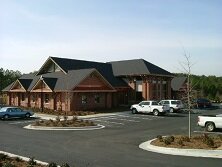Different Stroke Signs for Different Folks
Common—and uncommon—stroke symptoms

A recent National Stroke Association Survey found that one in three Americans can't name a single stroke symptom. “What's more, women may experience different, nontraditional symptoms than men—leading to delayed treatment, which can be deadly,” said Dr. David Hess, a stroke specialist at Georgia Regents Medical Center. Fast action must be taken to restore the brain's blood flow.
Know all the symptoms
It’s important that men and women are familiar with the most common stroke symptoms, which include sudden onset of:
• numbness or weakness of the face, arm or leg, especially on one side of the body
• confusion, trouble speaking or understanding
• trouble seeing in one or both eyes
• difficulty walking, dizziness, loss of balance or coordination
• severe headache with no known cause
• problems with memory, spatial orientation or perception
Women may also experience sudden onset of:
• pain in the face, chest, arms or legs
• a seizure
• a pounding or racing heartbeat
• nausea
• shortness of breath
• loss of consciousness, fainting, falls or accidents
Every minute counts
To help remember the most common stroke symptoms and seek prompt medical treatment, think of the acronym FAST:
Face. Does one side of the face drop when asked to smile?
Arms. When raising both arms, does one arm drift downward?
Speech. When trying to repeat a simple sentence, are the words slurred or incorrect?
Time. Rush to emergency care immediately for evaluation and treatment.
Did you know?
The Stroke Center at Georgia Regents Medical Center is the first in the state to earn Advanced Comprehensive Stroke Center status from the Joint Commission. To learn more about our compassionate stroke team, call 706-721-1691 or visit gru.edu/stroke.
Follow GRHealth's board Your Health on Pinterest.





